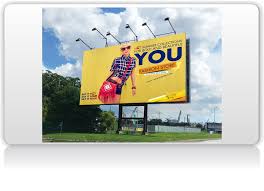Illuminated advertising has always been a powerful tool for attracting attention and conveying messages in a visually striking manner. As we move into 2024, the landscape of glow signage is evolving with new technologies, design trends, and sustainability practices. This comprehensive guide explores the latest trends in illuminated advertising, offering insights into how businesses can leverage these innovations to enhance their brand visibility and customer engagement.
Digital and Interactive Signage
Rise of Digital Displays Digital signage has transformed from simple static displays to dynamic digital boards that can show real-time information, animations, and interactive content. These advanced digital displays capture the audience’s attention more effectively than traditional signs.
Interactive Elements Interactive signage is gaining traction in various sectors, including retail, hospitality, and corporate environments. By integrating touch-screen capabilities and real-time data updates, businesses can create a more engaging experience for their customers. For example, interactive kiosks in stores can provide product information, and virtual try-ons, or facilitate self-checkout, thereby enhancing customer satisfaction and operational efficiency (
Augmented Reality (AR) and Artificial Intelligence (AI) AR and AI are being increasingly integrated into signage to personalize and enrich customer interactions. AR can overlay digital information onto the physical world, creating immersive experiences. AI can analyze customer data to tailor messages and advertisements dynamically, ensuring that content is relevant and engaging for the viewer. For example, digital billboards equipped with AI can change their content based on the demographics of the passing audience
Sustainability in Signage
Eco-Friendly Materials The trend towards sustainability is driving the use of eco-friendly materials in signage. Recycled plastics, sustainable woods, and biodegradable materials are becoming popular choices. This shift not only reduces the environmental impact but also appeals to eco-conscious consumers who prefer to support brands with green initiatives
Energy-Efficient Lighting LED lighting continues to dominate the illuminated signage market due to its energy efficiency and long lifespan. LEDs consume significantly less power than traditional incandescent or fluorescent lights, reducing both energy costs and carbon footprint. Moreover, advancements in LED technology now allow for brighter and more vibrant displays, which can be tailored to various applications
Solar-Powered Signage Some businesses are taking sustainability a step further by incorporating solar panels into their signage. Solar-powered signs can operate independently of the electrical grid, making them ideal for remote locations or outdoor settings. These signs harness renewable energy, further reducing environmental impact and operational costs
High-Resolution Displays
4K and 8K Displays The adoption of ultra-high-definition displays is a growing trend in the signage industry. 4K and 8K displays offer exceptionally sharp and detailed images, making them ideal for high-impact advertising. These displays are particularly effective in settings where visual clarity is paramount, such as trade shows, high-end retail stores, and corporate environments
MicroLED Technology MicroLED is an emerging display technology that offers several advantages over traditional LEDs and OLEDs. MicroLEDs are smaller, allowing for higher pixel densities and more detailed images. They also offer better color accuracy, higher brightness, and longer lifespans, making them a promising option for next-generation signage
Design Trends
Bold Typography and Custom Fonts Typography plays a crucial role in the effectiveness of signage. The trend towards bold and custom fonts is set to continue in 2024, as businesses seek to create unique and visually striking signage. Custom typography can help establish a distinct brand identity and convey messages in a memorable way. Bold fonts, in particular, can enhance readability and ensure that the message stands out from a distance
Minimalist Design and Negative Space The “less is more” philosophy is gaining popularity in signage design. Minimalist designs that make use of ample negative space are not only visually clean but also highly effective in conveying messages quickly and clearly. This trend is particularly relevant in an age of information overload, where simplicity can help cut through the noise and capture attention
Biophilic Design Integration Biophilic design, which incorporates natural elements into built environments, is becoming a significant trend in signage. This approach can involve using natural materials, organic shapes, and even living plants within signage. Biophilic designs create a calming and visually appealing environment, enhancing the overall customer experience and promoting a connection with nature
Wayfinding and Navigation Signage
Dynamic Wayfinding Solutions Wayfinding signage is evolving to become more dynamic and user-centric. Interactive maps, digital directories, and real-time navigation aids are being integrated into wayfinding systems to improve user experience in large and complex environments such as airports, hospitals, and shopping centers. These solutions can provide visitors with precise directions, information about the fastest routes, and updates on any changes in the layout.
Inclusive Design Inclusivity is becoming an essential aspect of wayfinding signage. This includes the incorporation of Braille, tactile elements, and multilingual support to ensure that signage is accessible to a wider audience. As inclusivity becomes a priority for businesses and public spaces, the demand for inclusive signage solutions is expected to rise .
Innovative Lighting Techniques
Edge-Lit and Back-Lit Signs Edge-lit and back-lit signs offer unique lighting effects that can enhance the visual appeal of signage. Edge-lit signs use LED strips along the edges to create a glowing effect, while back-lit signs illuminate the entire sign from behind, creating a halo effect. These techniques can add depth and dimension to signage, making it more eye-catching and memorable
Dynamic Lighting Effects Dynamic lighting effects, such as color-changing LEDs and programmable light sequences, are becoming popular in illuminated advertising. These effects can create a sense of motion and excitement, drawing more attention to the signage. For example, color-changing LEDs can be used to highlight different aspects of a sign or to create seasonal displays that change throughout the year.
Advanced Manufacturing Techniques
3D Printing 3D printing technology is revolutionizing the production of signage. It allows for the creation of complex shapes and custom designs that were previously difficult or impossible to produce. 3D printing also reduces production time and costs, making it an attractive option for businesses looking to create unique and intricate signage
Laser Cutting and Engraving Laser cutting and engraving technologies enable precise and detailed designs in signage. These techniques can be used to create intricate patterns, detailed logos, and custom lettering with high accuracy. Laser cutting is particularly useful for creating signs from a variety of materials, including metals, plastics, and wood
Integration with Smart Technologies
Internet of Things (IoT) The integration of IoT technologies into signage is opening up new possibilities for smart and connected displays. IoT-enabled signs can collect and analyze data, adjust their content based on environmental conditions, and even interact with other smart devices. For example, a smart billboard could change its advertisement based on the time of day, weather conditions, or the demographics of the nearby audience.
Smart Lighting Systems Smart lighting systems allow for more efficient and customizable illumination of signage. These systems can be controlled remotely, scheduled to change brightness or color at specific times, and adjusted based on real-time conditions. Smart lighting not only enhances the visual impact of signage but also improves energy efficiency and reduces operational costs .
Outdoor Advertising Innovations
Projecting Signs Projecting signs, also known as blade signs, extend from the side of a building and are designed to catch the attention of pedestrians from a distance. These signs are particularly effective in busy urban environments where space is limited. Projecting signs can be illuminated with LEDs or neon lights to ensure they stand out even at night .
Illuminated Letters Illuminated letters are a versatile option for outdoor advertising. They can be used to spell out a company’s name, slogan, or key message in a visually striking manner. These letters can be front-lit, back-lit, or both, creating various lighting effects that enhance visibility and brand recognition.
Lightbox Advertising Lightbox advertising involves placing printed graphics or posters on a box with built-in illumination. These displays are particularly effective in dimly lit environments, as the internal lighting enhances visibility. Lightboxes are versatile and can be wall-mounted, freestanding, or used in window displays).
Mobile and Temporary Signage
Vehicle Wraps Vehicle wraps are becoming an increasingly popular form of mobile advertising. These wraps cover a vehicle with a vinyl graphic that can display advertisements, brand logos, or promotional messages. The use of vivid colors and bold designs ensures that the vehicle stands out on the road, turning it into a moving billboard .
Pop-Up and Event Signage Temporary signage for events and pop-ups is another growing trend. These signs are designed to be easily transportable and set up quickly, making them ideal for trade shows, festivals, and other temporary installations. Pop-up signage can include banners, inflatable signs, and portable LED displays).
Conclusion
As we look ahead to 2024, the glow signage and illuminated advertising industry is poised for significant advancements. The integration of digital and interactive elements, the emphasis on sustainability, the adoption of high-resolution displays, and the use of innovative design techniques are all shaping the future of this dynamic field. Businesses that stay ahead of these trends and incorporate these innovations into their signage strategies will be well-positioned to capture attention, enhance brand visibility, and engage their audiences in meaningful ways







